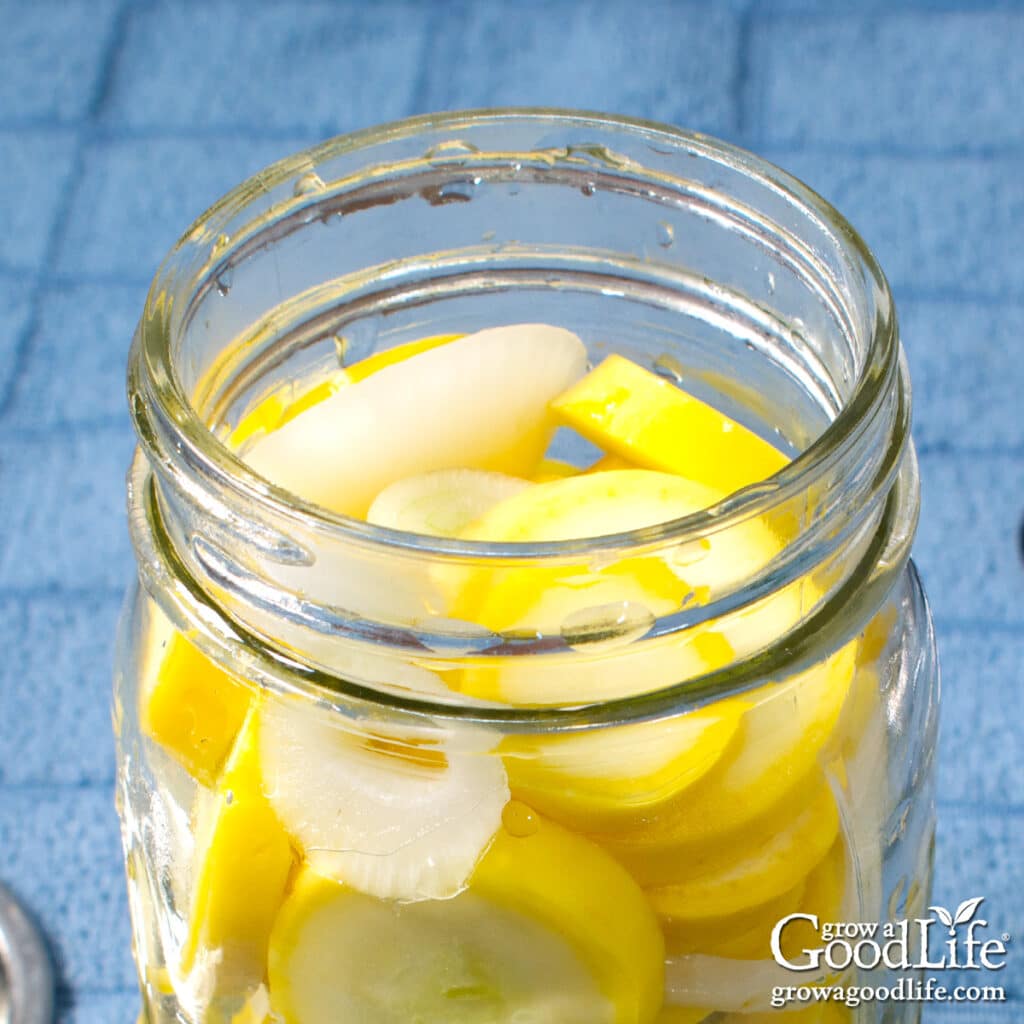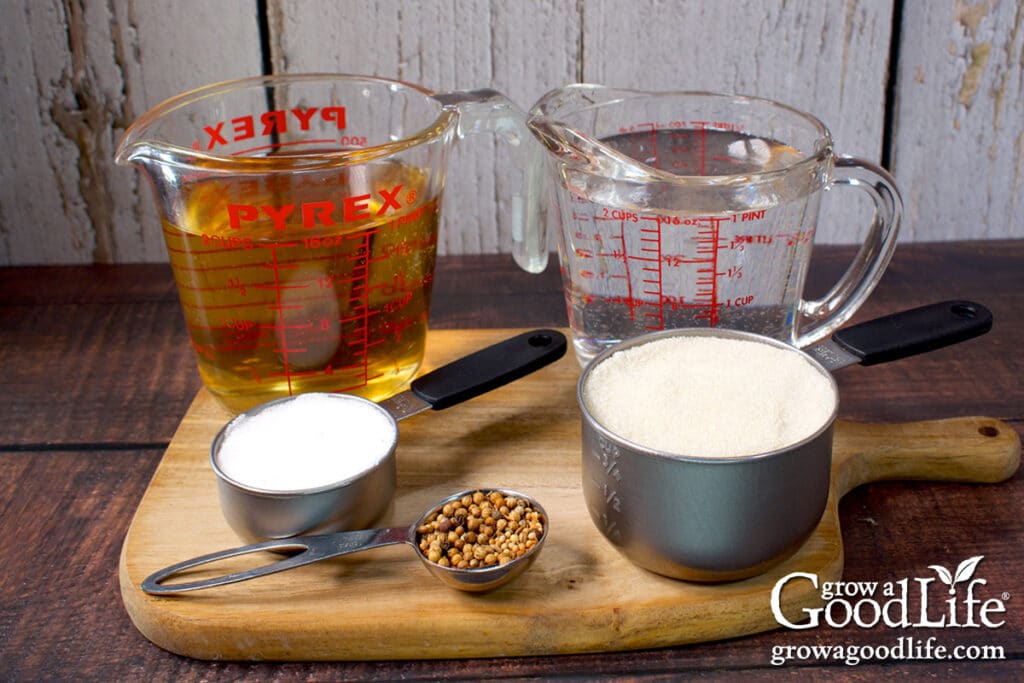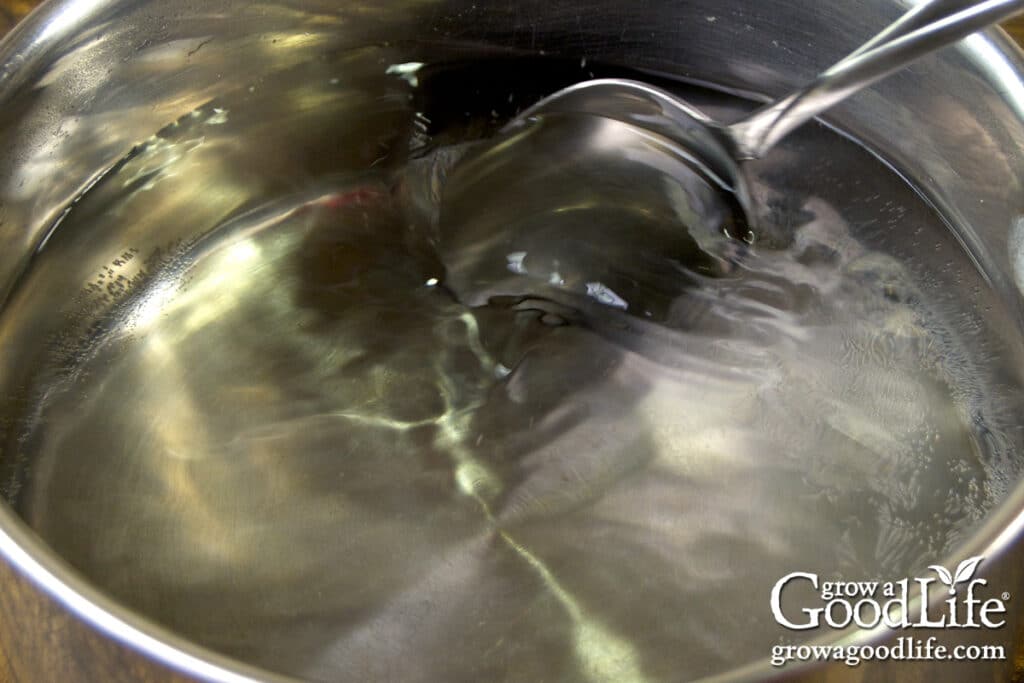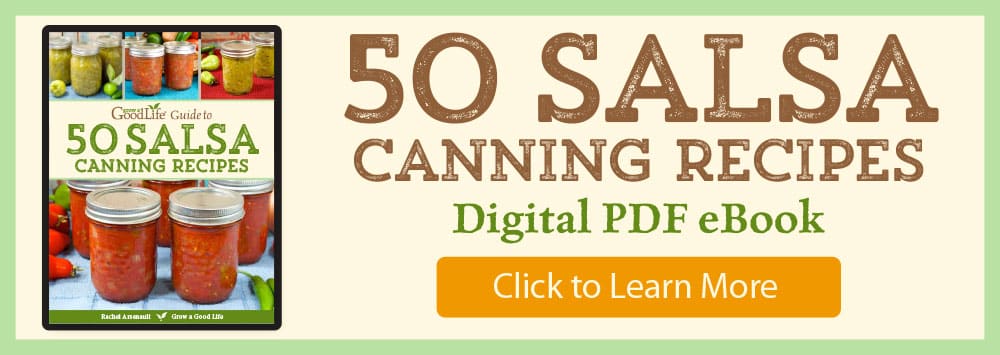What to Do If You Run Out of Pickling Brine
This post may contain affiliate links, which means that I may receive a commission if you make a purchase using these links. As an Amazon Associate I earn from qualifying purchases.
Did you run short on pickle brine while canning? Learn why it happens, what not to do, and how to quickly make more pickling liquid safely to save your pickles.

If you’ve ever been in the middle of canning pickles only to realize you don’t have enough pickling liquid to cover your vegetables, you’re not alone. Even when you carefully follow a tested recipe, sometimes you’ll end up short. Don’t worry, your batch isn’t ruined. With a few quick adjustments, you can get back on track and ensure your pickles are both safe and delicious.
Before I publish a canning recipe on Grow a Good Life, it goes through several rounds of testing and evaluation. I always begin with a lab-tested, safe canning recipe from my list of trusted sources, then follow the instructions exactly, taking careful notes along the way.
If I make any safe adjustments, I run through it again (sometimes more than once until I get it right). Once I’m confident the recipe works, I make it again, write detailed steps for preparing the ingredients, photograph the process, and try to anticipate questions readers may have.
Even with all that testing, I still hear from readers who run into the same issue: Not having quite enough pickling liquid to cover their vegetables. I’ve even adapted my recipes to make extra brine, but sometimes it still isn’t quite enough.
The good news? Running out of pickling liquid is a common hiccup with a simple fix. Before we get into how to solve it, let’s look at the reasons it happens in the first place.
Why You Might Run Out of Pickling Liquid
Even when you follow a safe, tested recipe, several factors can cause your liquid to fall short. Understanding these reasons will help you troubleshoot in the moment and prevent it from happening again.
1. Evaporation During Boiling
The pickling brine needs to be hot when you fill the jars, but if it’s heated too early or kept at a rolling boil, some of the liquid will naturally evaporate. Even losing half a cup can be enough to come up short when you’re filling the last jar.
Tip: Don’t start heating your brine too soon. Wait until you are ready to fill your jars, then bring the mixture to a boil, stirring until the salt and sugar dissolve. Once dissolved, reduce the heat to a gentle simmer and immediately pack the jars.
2. Packing Vegetables Too Loosely
The way you pack vegetables into jars makes a big difference. If they’re packed too loosely, there’s more empty space in the jar that must be filled with liquid. Beginners sometimes hesitate to push vegetables down firmly, but snug packing (without crushing) is key.
Tip: Layer vegetables carefully and use a clean spoon or your hand to settle them in. Aim for even distribution and remove large air pockets.
3. Differences in Produce Size and Shape
No two cucumbers, carrots, or beans are exactly alike. Wide slices, thick spears, or oddly shaped vegetables can all change how the jars fill. A jar full of slender cucumber spears might need less brine than a jar filled with thicker slices.
Tip: Cut vegetables into similar sizes and shapes for more consistent packing and brine coverage.
4. Natural Variability in Vegetables
Vegetables hold different amounts of water depending on their age, variety, and growing conditions. Firmer, fresher cucumbers may pack differently than softer, garden-worn ones, which can subtly change how much brine is needed to cover them.
Tip: Expect some natural variation. Preparing a small extra batch of brine helps account for these differences.
5. Measuring Errors
Another common cause of running short on brine is simply measuring errors. It’s easy to accidentally add more vegetables than the recipe calls for or mis-measure the liquid when preparing the brine. Even a small difference can throw off the balance and leave you without enough brine to fill all your jars.
Tip: Double-check your measurements and prep only the amount of vegetables the recipe specifies. When making the pickling liquid, use proper measuring cups for liquids and level dry measuring cups or spoons for salt and sugar to keep the ratio accurate.

6. Preparation Steps That Affect Brine Levels
Some canning recipes include soaking vegetables in salted ice water, draining and rinsing, or briefly heating the vegetables in the pickling brine before packing the jars. These steps are part of the tested recipe, but the way your vegetables respond can still affect the amount of liquid you will need.
- Soaking pulls moisture out of the vegetables. Once drained, they may take up less space in the jar, leaving more room that must be filled with brine.
- Heating in brine can soften and shrink vegetables slightly, which also creates extra space to cover with liquid.
- Evaporation while heating can reduce the brine itself, especially if it’s simmered too long or left uncovered. Even a small amount lost can matter when you get to the last jar.
Tip: Variations in vegetable moisture and firmness mean some batches will require a little more brine than others. Having a small extra batch ready helps you avoid running short.
What to Do If You Don’t Have Enough Brine for Pickles
The best fix is to make more brine using the same ratio from your recipe. This keeps the acidity level consistent, which is what makes home-canned pickles safe.
Some recipes use straight vinegar, while others use a vinegar-and-water mixture. A few also include sugar and salt. Here’s what to keep in mind:
- Vinegar is what preserves your pickles. It provides the acidity needed to prevent spoilage. Never dilute the vinegar beyond what the tested recipe specifies.
- Water is sometimes added for flavor balance. Recipes with a vinegar-and-water ratio are tested for safety. Stick to the ratio exactly.
- Salt, sugar, and pickling spices are for flavor. They don’t affect the safety of your pickles when canning, but they do affect taste and texture.
How to Make More Brine
- Check your recipe ratio. Look at the amounts of vinegar, water, salt, and sugar you started with. Example: 4 cups vinegar, 4 cups water, 1/2 cup pickling salt, 1/4 cup sugar.
- Scale it down. If you need just a little more, mix a smaller batch using the same proportions. Example: 1 cup vinegar, 1 cup water, 2 tablespoons salt, 1 tablespoon sugar.
- Heat it up. Bring the additional brine to a boil before pouring it over your vegetables.
- Fill jars properly. Cover the vegetables completely with brine, leaving the headspace recommended in the recipe.

What Not to Do
When you’re short on brine, it can be tempting to improvise. But some quick fixes can make your pickles unsafe or ruin the flavor:
- Don’t top off with plain water. This dilutes the vinegar, lowering the acidity and making your pickles unsafe for canning.
- Don’t change the vinegar ratio. Vinegar is what preserves your pickles. Whether your recipe uses straight vinegar or a vinegar-and-water mix, the ratio must stay the same for safety.
- Don’t leave vegetables uncovered. Any part of the vegetables sticking up above the brine may spoil or develop mold.
Frequently Asked Questions About Pickle Brine
Over the years, I’ve received a lot of questions from readers who ran out of brine when canning pickles. Here are some of the most common concerns, along with clear answers to help you troubleshoot and keep your pickles safe and delicious.
Can I top off my pickles with water if I run out of pickle brine?
No. Adding plain water dilutes the vinegar, lowering the acidity and making your pickles unsafe for canning. Always stick to the ratio of vinegar and water from the tested recipe.
What if I only need a tiny bit more liquid?
You can safely make a small batch using the same proportions as your recipe. For example, if your recipe uses equal parts vinegar and water, make 1/2 cup vinegar, 1/2 cup water, and 1 tablespoon salt. Bring it to a boil before adding it to your jars.
Can I use leftover pickling brine from another batch or from store-bought pickles?
No. Leftover brine may not have the correct vinegar concentration for safe canning. Always make fresh brine using the ratios from your tested recipe.
Can I use straight vinegar as brine?
Yes, straight vinegar is safe, but it will make your pickles much sharper in flavor. Many recipes balance vinegar with water, salt, and sugar for better taste. For the best results, stick to the tested recipe’s proportions. But if you are in a pinch, straight vinegar is safe to use.
Does it matter if some vegetables aren’t fully covered with brine?
Yes. Any vegetables sticking up above the brine are at risk of spoiling. Make sure all vegetables are fully submerged and maintain the recommended headspace for safe canning.
Can I make extra brine ahead of time?
Yes. It’s a good idea to prepare a little extra brine, especially if you’re working with irregularly shaped vegetables. Keep it hot on the stove while you’re packing jars, and if you don’t need it, you can discard it after canning, or use it to make refrigerator pickles.
No matter what hiccups you encounter, the key is to keep your vinegar ratio consistent and your vegetables fully covered. With these tips, you can confidently handle brine shortages and move forward with a safe, tasty batch of pickles.
Keep Calm and Pickle On
Running short on brine can feel stressful in the middle of canning, but it’s an easy problem to solve. As long as you stick to the same tested ratio of vinegar, water, and salt, you can safely make more brine and carry on with confidence.
For more canning help and inspiration, explore my collection of safe pickle canning recipes.
You may also like these popular recipes:
- Granny’s Bread and Butter Pickles
- Pickled Red Onions Canning Recipe
- Pickled Summer Squash Canning Recipe
- Pickled Jalapeños Canning Recipe
If you love salsa, consider adding our eBook, Grow a Good Life Guide to 50 Salsa Canning Recipes, to your resource library. This 72-page eBook is packed with a variety of delicious salsa recipes, including classic tomato salsas to roasted and grilled salsas to tomatillo and delicious fruit blends, all safe for water bath canning. It’s the perfect guide to help you preserve your garden harvests.

